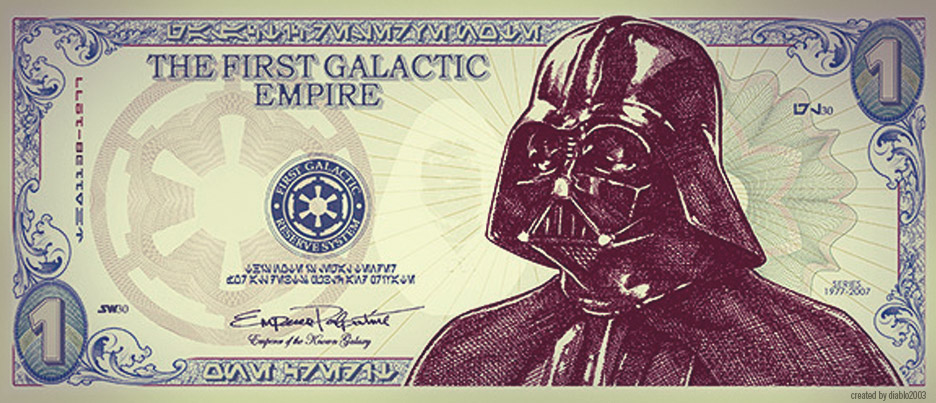A Financial Marketing Lesson from Star Wars

The newest installment of the Star Wars franchise opens in theaters next week. Count me as one of millions who are excited to see what new terror has developed three decades after Luke Skywalker and the Rebel Alliance claimed victory over the evil Empire in that galaxy far, far away.
Maybe it’s financial ruin? Okay, probably not. But it could have been, according to Zachary Feinstein, an assistant financial engineering professor at Washington University in St. Louis.
He wrote a mini thesis last week outlining the likely dire straits the galactic community would have found itself following the destruction of two government-funded Death Stars in the matter of just a few years. He postulates the Rebel Alliance would need to provide a bailout of 15 to 20 percent of the Gross Galactic Product (his version of GDP of the galaxy). While the new Star Wars isn’t going to get into it, this educational paper sure is a fascinating look at the financial repercussions of a fictional rebellion.
How fascinating? Well, it’s gained some major attention. The galaxy might not be talking about it, but Feinstein’s paper went international on Earth; NBC News picked it up, as did the Huffington Post, and dozens of other outlets.
While viewers of “Star Wars: The Force Awakens” aren’t likely to receive any lessons in financial literacy (other than going to the movies is expensive!), Feinstein’s paper serves as a great example of how financial institutions can take advantage of trending news stories to help market themselves. Riding the wave of other big news – even fictional news – is a great way to earn attention. In fact, this particular example works so well because it isn’t real. There weren’t any lives lost in the collapse of the Empire and the rebel victors aren’t in any financial ruin.
At a time when targeting millennials (or younger) is a major focus of financial institutions, contributing opinion pieces and other content that comments on pop culture is a great way to get in front of current – and potential – customers.
Just don’t try to price out the actual cost of all the gifts in the “12 Days of Christmas.” PNC has been doing it for 30 years in its Christmas Price Index.

